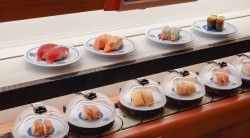
Originally published on metropolis.co.jp on March 2014

The J.League kicked off its 21st season on March 1, with fans across the country braving the late winter chill to return to stadiums both near and far. What can they look forward to in 2014?
Will Sanfrecce’s third arrow hit the target?
Sanfrecce Hiroshima became the first team since 2008’s Kashima Antlers to defend the J.League title when they overtook runners-up Yokohama F. Marinos on the final day of the season. The Kanagawa side got their revenge on New Year’s Day when they triumphed in the Emperor’s Cup final, but Sanfrecce struck back in the February 22 Fuji Xerox Super Cup match-up between the two league co-founders.
With a squad that has seen few major changes aside from the departure of national team backup goalkeeper Shusaku Nishikawa (who was replaced by the able Takuto Hayashi), few deny that Sanfrecce are capable of winning a third straight league crown.
Both the reigning champions and Marinos, along with Kawasaki Frontale and Cerezo Osaka, will look to end Japan’s five-year run without an AFC Champions League title. This year, the continental tournament’s new format will guarantee an East vs. West match-up in the final.
On the bubble for Brazil
Following Japan’s March 5 game against New Zealand, Japanese players have roughly 10 weeks to demonstrate their worthiness to Alberto Zaccheroni as he prepares to select his squad for this summer’s World Cup. With over half of the 23-man roster expected to come from European clubs, there will be stiff competition for the remaining spots among J.League players.
Japan’s defence is possibly the biggest question mark heading into Brazil; Maya Yoshida and Yasuyuki Konno’s recent poor international form could open the way for FC Tokyo captain Masato Morishige to join the squad. Some fans are even clamoring for the return of 2010 center-back duo Marcus Tulio Tanaka and Yuji Nakazawa.
On the attacking end, Yuya Osako’s departure for 1860 Munich will put pressure on Cerezo star Yoichiro Kakitani, who chose to remain in Japan despite interest from European clubs, to show that his 17-goal 2013 season wasn’t a fluke.
Star power from abroad
While fans have become accustomed to announcements of Japanese players leaving for Europe, this winter was a refreshing change of pace with two international stars making their way to Japan.
The biggest of the two is undoubtedly Diego Forlan, the 2010 World Cup MVP who’s won trophies with Manchester United, Atletico Madrid and his native Uruguay. The 34-year-old’s No. 10 jersey is already one of Cerezo Osaka’s top-sellers and the club welcomed unprecedented crowds to their season opener against Sanfrecce Hiroshima.
Meanwhile, the league’s efforts to expand into Southeast Asia should see a boost from Indonesia international Irfan Bachdim, who joined Ventforet Kofu after a successful trial. The 23-year-old is Southeast Asia’s most popular player and will undoubtedly provide a spark to coach Hiroshi Jofuku’s squad.
The league will also see some international flavor on the bench: one-time Sanfrecce player and former Australia coach Graham Arnold will manage Vegalta Sendai after winning the A-League championship last season with Central Coast Mariners. In the capital, Italian coach Massimo Ficcadenti, an avowed J.League fan who coached Samurai Blue superstar Yuto Nagatomo at Cesena, has taken the reins at FC Tokyo.
Sayonara, Kokuritsu
The legendary Tokyo National Stadium will see its final J.League game played on May 6 before construction of the New National Stadium begins later this year. The venue famously hosted the J.League’s first game between Yokohama Marinos and Verdy Kawasaki. The Emperor’s Cup final, traditionally played at Kokuritsu on New Year’s Day, will take place at Nissan Stadium on December 13 to accommodate next January’s Asian Cup in Australia.
The long road to Rio
In addition to 11 pro and semi-pro teams from across Japan, the newly-formed third division known as the J3 will include a rotating “Under-22 Selection” featuring players eligible to participate in the 2016 Summer Olympics. It’s an experiment that is not without its critics, but time will tell as to whether or not it can help Makoto Teguramori’s Japan squad improve on the country’s fourth-place finish in London.
Want to follow the J.League in English? Check out:
The English-language J-Talk Podcast, updated weekly
http://jtalkpodcast.blogspot.jp/
JapanFooty.com
www.japanfooty.com/
The J.League community on Reddit
www.reddit.com/r/jleague/







